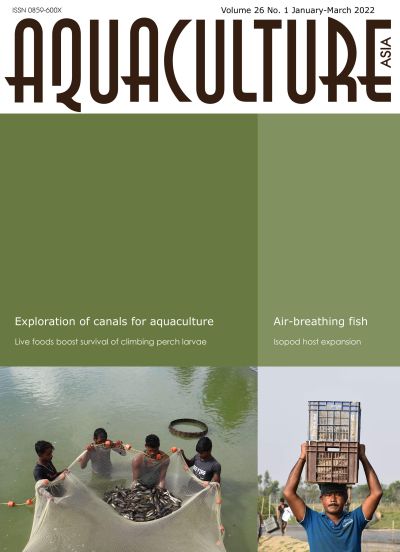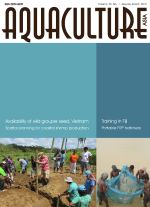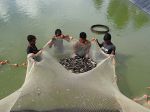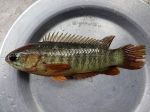Aquaculture Asia Magazine, January-March 2022
8 March 2022 | 7662 views | .pdf | 13.34 MB | Freshwater finfish, Genetics and biodiversity, Hatchery and nursery, Health and welfare, Inland aquaculture, Livelihoods, gender and social issues, Nutrition and feeding, India

In this issue:
- Exploration of canal resources as a potential source for fish production in the Indian Sundarbans
Archana Sinha, Aparna Roy, Pranab Gogoi, Tasso Tayung, Mitesh. H. Ramteke, Arunava Mitra, Subhendu Mondal and Basanta Kumar Das - Expansion of new host range of isopod Tachaea spongillicola infestation to fish species could pose a risk to aquaculture food industry in southeast Asian countries
Amiya Kumar Sahoo, Dharmendra Kumar Meena, Basanta Kumar Das - Aspects of air-breathing fish farming practiced at Mathurapur-II Block, West Bengal, India
Subrato Ghosh and Pulakesh Purkait - Magical role of live foods in boosting spawn survival of climbing perch: A success in the farmer’s field
D.N. Chattopadhyay, S. Adhikari, B.N. Paul, R.N. Mandal, G.S. Saha, B.R. Pillai and S.K. Swain - NACA Newsletter
Creative Commons Attribution.




